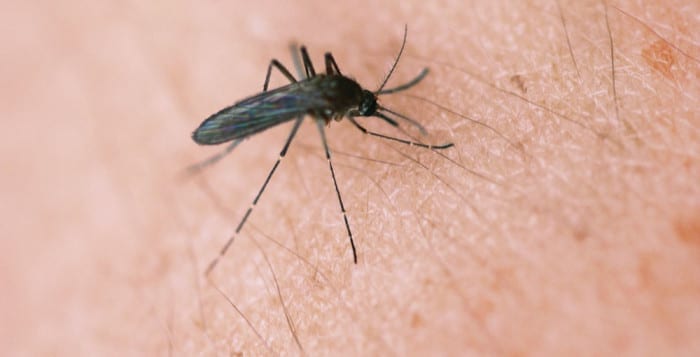I think most of us can agree that we want to age as gracefully as possible. But, what does this mean? While we may want to avoid physical ailments, such as achy joints and musculoskeletal pain, cognitive decline seems to be one of the scarier prospects as we age. The one organ in our body that we can’t yet transplant is the brain, so we really need to keep it in the best shape possible. We will all experience some form of age-related cognitive decline. But what about more significant changes in brain function?
The prevalence of mild cognitive impairment is hard to quantify, but roughly 16 to 22 percent of us will experience it (1). The reason for the range is that it is difficult to define but is thought of as a disorder that is between normal cognition and dementia. However, it is not a normal stage of aging. Mild cognitive impairment may lead to dementia, which is defined as affecting the memory and also at least one other part of the brain, such as executive functioning (2). The most common form is Alzheimer’s disease.
Who is at highest risk for decline from mild cognitive impairment and dementia? It turns out that this is a potential question of gender. Of those with mild cognitive impairment, women tend to worsen at an almost two times faster rate than men (3). However, researchers were baffled as to why.
There are preventions and treatments that may alter these different disorders that affect our mental functioning.
There may also be tests to determine whether you are at increased risk for dementia. These range from a short mental exam in the physician’s office to a saliva test that measures cortisol levels, the stress hormone. Higher levels of cortisol at night than normal were associated with significantly less brain volume and reductions in cognitive function in participants who did not have signs of impairment yet (4).
As “location, location, location” is important to real estate, it seems that lifestyle modifications including exercise, diet and overall brain fitness may be important to cognitive functioning.
Where do drugs fit in terms of treating dementia? The main class of drugs, cholinesterase inhibitors, seems to disappoint and also appears to have significant side effects.
Let’s look at the evidence.
Side effects of medication
Unfortunately, we do not have medication that is a silver bullet to successful outcomes in dementia. The mainstay medications are among a class referred to as anti-cholinesterase inhibitors, drugs that have a mild effect on dementia. These drugs include Aricept (donepezil), Exelon (rivastigmine) and Razadyne (galantamine). In a recent study, results showed that anti-cholinesterase inhibitors caused significant weight loss (5). Compared to those not on anti-cholinesterase inhibitors, there was a 23 percent increased risk of at least 10 pounds or more in unintentional weight loss over 12 months. There were more than 6,000 patients who were 65 years and older involved in the VA health systems retrospective study. This means that approximately 1 in 21 patients treated with these drugs may experience harmful weight loss over one year. Talk to your doctor about the risks and benefits of this drug class.
Exercise, exercise, exercise
Why? There are three recent studies showing exercise’s beneficial impact on cognitive functioning. Exercise may play a role in not just prevention but also in treatment.
Two of the studies were presented at the Alzheimer’s Association International Conference. In one, results show that exercise actually reduced tau proteins in patients over the age of 70 with prediabetes and amnestic mild cognitive impairment (6). These are patients considered at very high risk for Alzheimer’s disease.
The patients who saw a benefit did moderate to high intensity aerobic exercise compared to those who did stretching. The key to success in patients who are older (55 to 89 years) was to gradually increase the intensity and duration of exercise over a six-week period until 30 out of 45 minutes were spent at 75 to 85 percent of their maximum heart rate. The frequency of exercise was four days a week. The exercise increased blood flow to areas of the brain typically affected by Alzheimer’s disease.
In another study, results show that walking 40 minutes in addition to warm-up and cool-down periods, totaling one hour of exercise three times a week, could improve cognition in those with vascular cognitive impairment (VCI), another form of dementia (7). This population was composed of 56- to 96-year-olds with mild VCI. The duration of the study was six months.
A third exercise study was a randomized controlled trial (RCT), the gold standard of studies. In this study, participants trained to moderate to intensive aerobic exercise levels, 70 to 80 percent of maximum heart rate (8). The subgroup population that maintained at least an 80 percent adherence to the exercise regimen saw a significant positive change in the Symbol Digit Modalities Test (SDMT), a test used for attention and mental speed, compared to the control. However, the primary end point did not reach statistical significance. There was also an improvement in neuropsychiatric symptoms in the treatment group. These patients trained over a four-month period and had mild to moderate Alzheimer’s disease at baseline. This is the first study to indicate that exercise could have an impact on those with Alzheimer’s disease. The median age was 72 for the treatment group.
The role of diet
In a study, those who had the greatest adherence (top tertile) to the MIND diet were cognitively 7.5 years younger compared to those who had the least adherence (bottom tertile) (9). The MIND diet is a modified combination of the Mediterranean diet and the dietary approach to stop hypertension (DASH) diet. This was a prospective (forward-looking) observational study over a 4.7-year period involving almost 1,000 patients with a mean age of 81 years.
Lifestyle modifications
So far, we have seen the potential benefits of diet and exercise as separate entities. But what if we brought numerous components of lifestyle modifications together? In the Finnish Geriatric Intervention Study to Prevent Cognitive Impairment and Disability (FINGER) study, results show that a multidisciplinary approach to lifestyle modifications potentially slowed cognitive decline in a healthy older population (10). The treatment arm participants had a 25 percent improvement in cognitive scores, compared to the control group given health advice only. The lifestyle modifications in the treatment arm included diet, exercise, brain training and management of vascular risk factors. This was a large, 1,260-participant, RCT involving 60- to 70-year-olds over a two-year duration. The population, though healthy, was at risk for mild cognitive impairment.
Testing for risk
In a study involving the Memory Binding Test (MBT), those who did not perform well were at a significantly greater risk of amnestic mild cognitive impairment and dementia (11). This is a test that can be performed in a physician’s office in about 10 minutes. The test involves associative binding between two word lists. Those who do poorly on the test are at 2.5 times increased risk of amnestic mild cognitive impairment and at a greater risk of dementia. The test had good durability with up to a decade of follow-up.
Thus, lifestyle modifications, with or without medications may have powerful effects in preventing and potentially treating mild cognitive decline and dementia.
References:
(1) Lancet. 1997;349(9068):1793; Ann Intern Med. 2008;148(6):427. (2) uptodate.com. (3) AAIC 2015. Posters P4-108. (4) Neurology. Online 2015 Aug 19. (5) J Am Geriatr Soc. 2015;63(8):1512-1518. (6) AAIC 2015. Oral presentations 0504-05. (7) AAIC 2015. Oral presentations 05-04-04. (8) EAN 2015. Abstract O310. (9) Alzheimers Dement. 2015 Jun 15. (10) Lancet. 2015 Jun 6;385(9984):2255-2263. (11) AAIC 2015. Abstract O3-10-04.
Dr. Dunaief is a speaker, author and local lifestyle medicine physician focusing on the integration of medicine, nutrition, fitness and stress management. For further information, go to the website www.medicalcompassmd.com or consult your personal physician.






















































